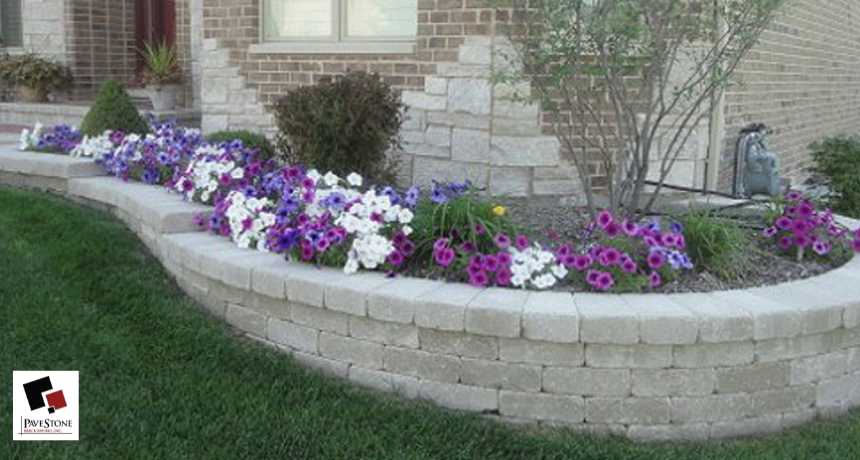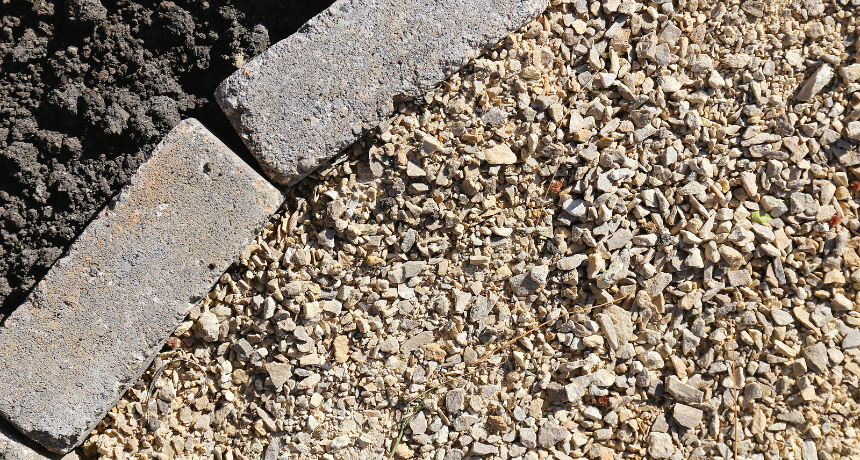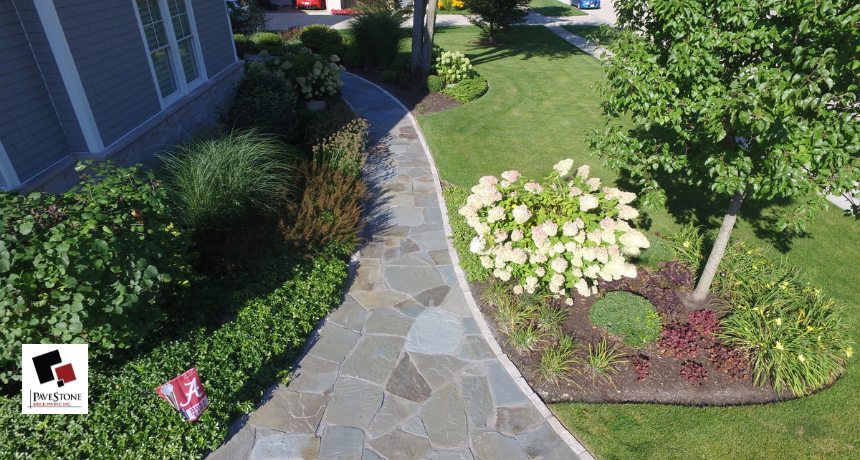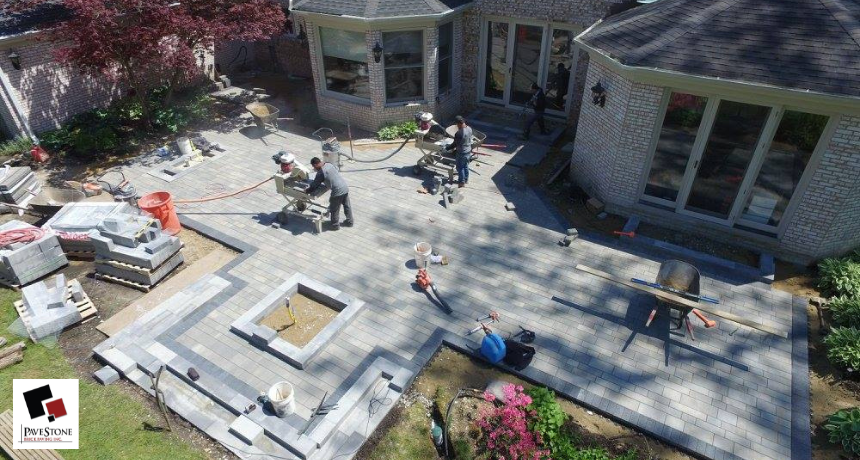Summary: Paver edging is a versatile and practical solution for separating gardens from lawns. It not only enhances the aesthetic appeal but also prevents plants from encroaching on the lawn. Homeowners can easily install paver edging themselves, and it offers various options for customization. By following a few simple steps, one can create a clean and attractive edge for their garden or patio.

Paver Edging
Installing paver edging helps separate the garden from the lawn. A formal boundary creates a tidy look. Aside from its pleasing aesthetics, edging serves a practical purpose: It prevents garden plants from spilling over into the lawn. Here’s how homeowners can create a clean edge with paver edging.
What is paver edging?
Brick or sand-set pavers are secured with a rigid, plastic material called paver edging. Paver edging is flexible and can assume various forms, such as angled, curved, or straight. It is quick and easy to install as a DIY project for homeowners but can be outsourced to a professional contractor.
What are the benefits of edging?
Edging keeps the garden or patio inside a designated boundary. By adding color, form, and texture, edging becomes an essential component of the overall landscape design. Plus, installing edging extends the life of the patio by keeping the sand and the base from gradually washing away.
Why types of edging are available?
Homeowners can install any of several types of edging, from brick to wood and stone. Brick edging can be set upright, flat, or at an angle. Wood edging should be made of pressure-treated wood. Flagstone and cut stone are excellent choices for stone edging.
How do homeowners install paver edging?
Homeowners who plan to install paver edging should set aside a weekend to complete the project on a 10 x 10 area. The estimated cost of installation ranges from $80 to $100. Equipment or tools that may be needed include a hammer, handsaw, paver edging, and 8-inch nylon spikes.

Step 1: Develop a Plan
Begin the installation by creating a preliminary plan for where the paver edging should be placed in the yard. Use string, stakes, or a garden hose to outline the area. Prior to starting, make note of sprinklers, drip systems, underground pipes, and wiring.
Step 2: Excavate and Level the Site
Shovel the area, digging up sod. Rake away any rocks, grass, or natural debris. Level the site with a hand tamper or shovel. Compact the dirt under which the paver edging will be installed. Protect the area from weeds by laying landscape fabric and anchoring it in place.
Step 3: Add the Gravel Base
A gravel base or a base of polymer jointing sand under the landscape fabric helps keep the pavers in place in rainy weather. Compact the base and level it beyond the string outline. Resecure the layout strings to ensure they precisely outline the garden or walkway.
Step 4: Position the Paver Edging
Using the layout strings as an alignment guide, place the lengths of paver edging in the desired spots. Position the paver edging so that it matches the preferred shape of the garden or walkway. If pieces of edging need to be partially cut, use a hand saw or jig saw.
Step 5: Cut the Edging to Form Curves
The garden or walkway may feature elegant curves. In this case, the edging can be shaped to conform. Achieve a curved appearance and remove the rigidity of the edging by cutting the connecting tabs along the edging’s edges. Homeowners may rely on a helper for this step.
Step 6: Anchor the Edging
Using the hammer, drive the nylon spikes through the holes in the paver edging to secure them into the ground. Do the same for each length of paver edging. Curved locations require additional spikes. Use care when driving the spikes with a hammer to prevent the paver edging from snapping.

Step 7: Set the Bricks or Pavers
Set the pavers and ensure they lie flat by using a level. In the event some pavers appear unstable, either add more sand or pound them into place with a rubber mallet. Jointing sand may be used to fill in the gaps between the pavers.
How do homeowners prevent pavers from sinking?
Pavers can tip or sink when the soil underneath is impacted by poor drainage. This issue can be resolved with the use of a paver edging restraint. The sinking can be further corrected by ensuring the gravel base is properly compacted to eliminate air pockets and create a stable base.
How high should paver edging be?
A smooth look and feel are achieved when the pavers are flush with the ground. Be aware that the paver edging should not be too high, too low, or be flush with the pavers. Ideally, the top of the edging should come up ½-inch from the bottom of the pavers.
What is the recommended order for laying pavers?
Start from one side of the permanent edge. Work on one row at a time, from right to left, then from left to right. Leave gaps no greater than 1/8-inch. Pavers that are too tightly positioned fail and weeds grow between those that are too far apart.
A beautiful backyard awaits you when you choose Pavestone Brick Paving, Inc, for all your landscaping needs. We are a locally based edging and retaining wall contractor with exceptional design expertise. Our crews are experienced in building retaining walls that define your outdoor living space or raise planter beds.
Homeowners have a range of options, from brick edging to stone edging. Our Unilock brick pavers are available in an assortment of styles, colors, sizes, and textures. Natural stone slabs offer durability, versatility and are cost-effective to maintain; plus, their natural beauty offers appeal.
The installation of a retaining wall, edging, and other features starts with an intelligent design. Our skilled design experts help you decide on the contour, materials, and extras, such as pillars or lights. Once you approve the 3D model, the installation begins. We also offer our valued customers convenient brick paver repairs and maintenance.

Pavestone Brick Paving, Inc, is the preferred hardscape contractor for homeowners living in Des Plaines, Illinois, and the surrounding suburbs. Revitalize the look of your outdoor living space with our high-quality retaining wall and edging installation. Contact us today for precision workmanship that enhances your home.














